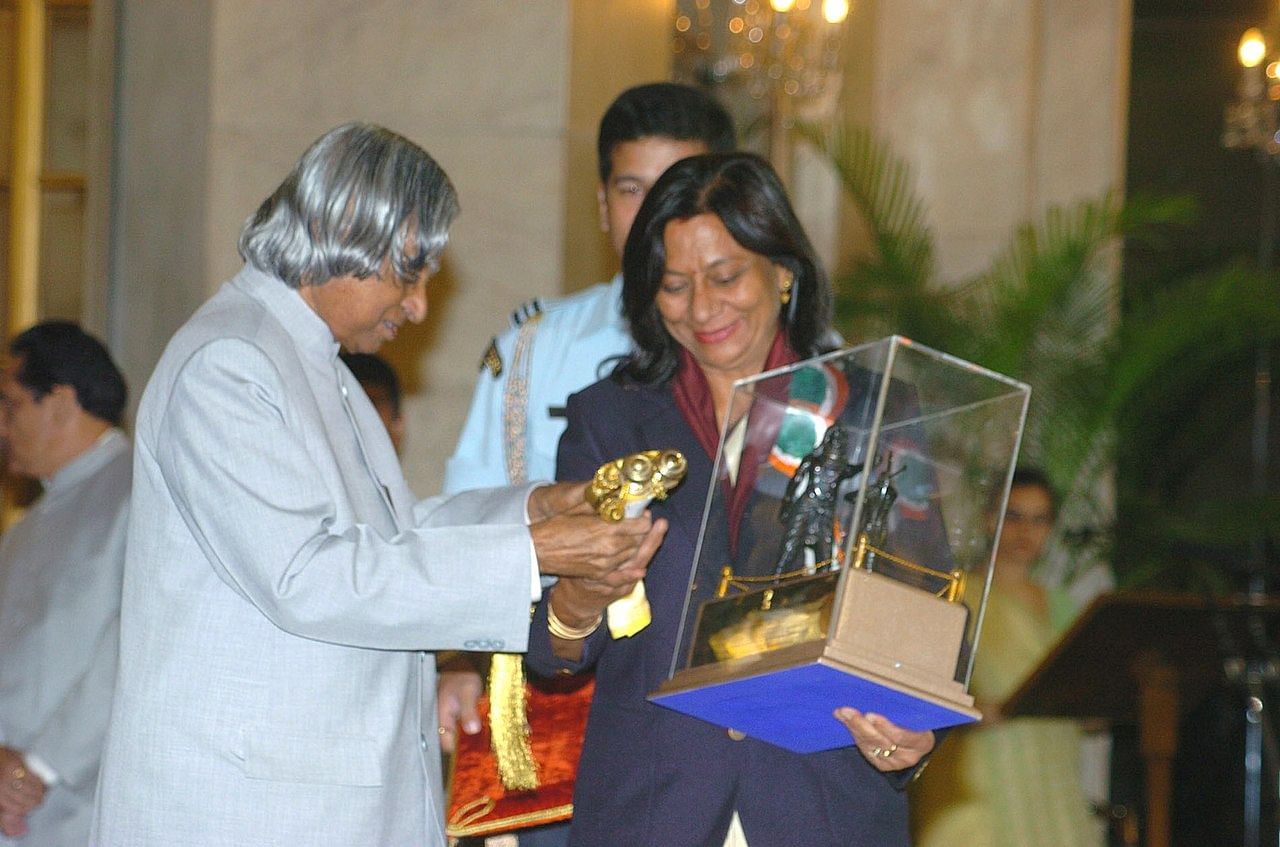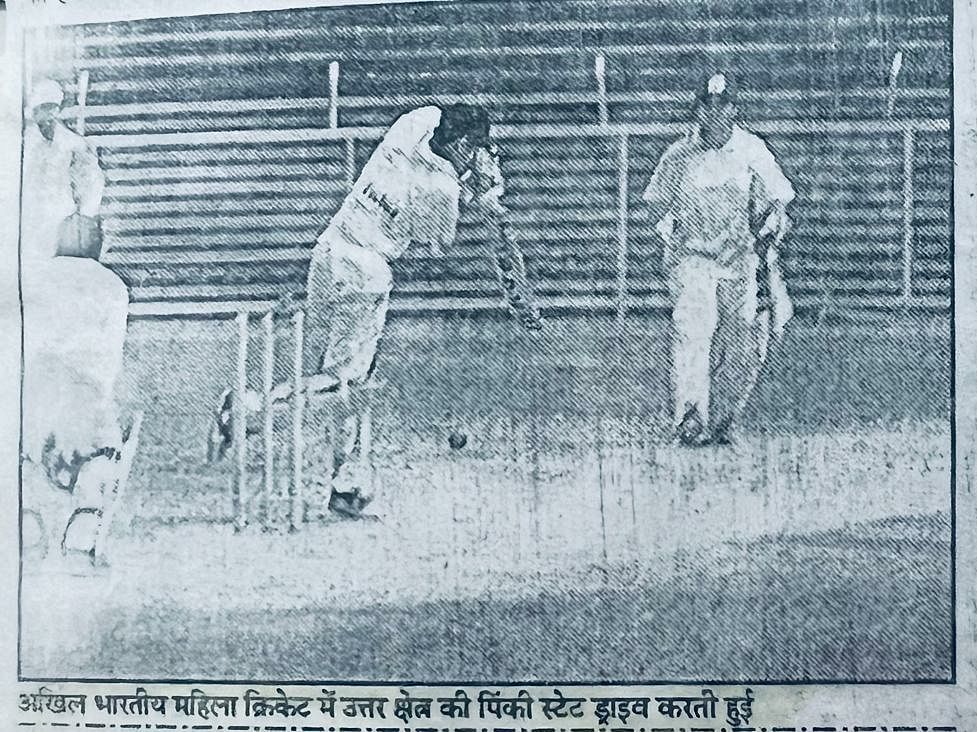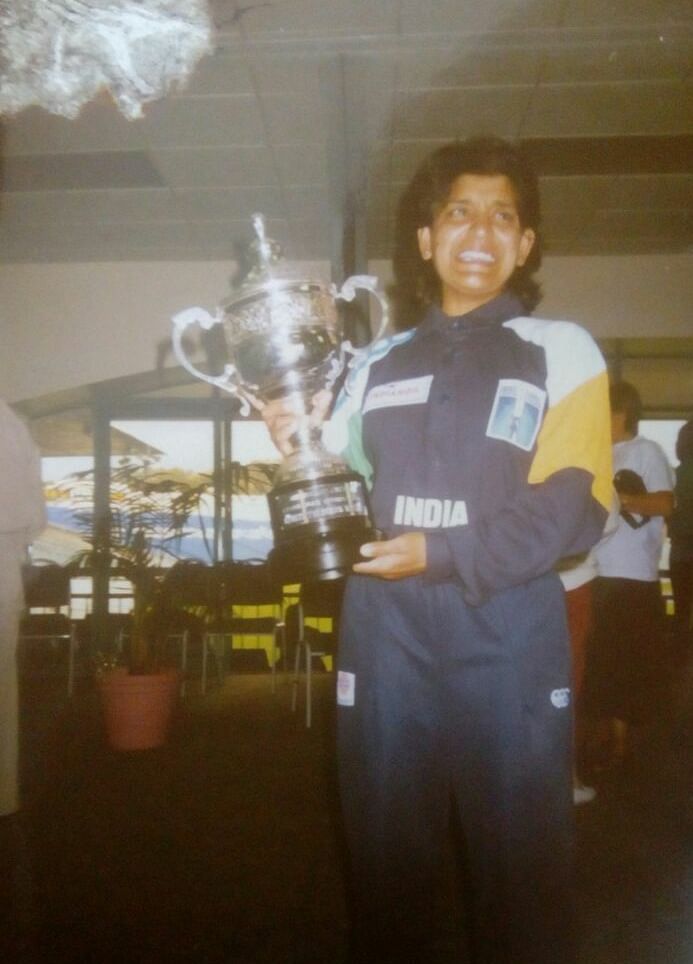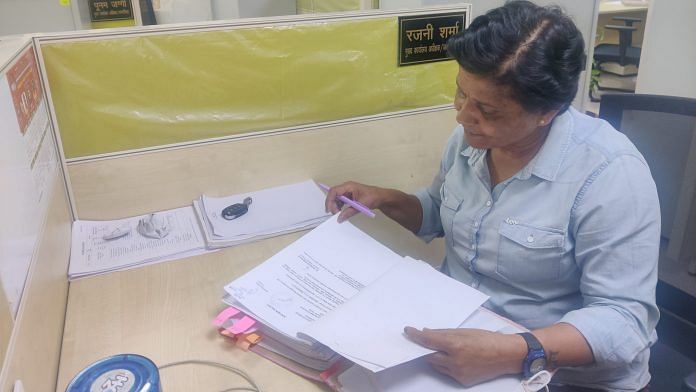At 42, Pinki Singh hit the headlines when she won India’s first lawn bowls gold in the women’s fours event at the 2022 Commonwealth Games in August. But lawn bowls wasn’t Pinky’s first love.
It was cricket.
An all-rounder from Delhi, Pinki was a promising player, winning several ‘woman of the match’ awards, playing first-class matches and representing Delhi in the Rani Jhansi Trophy.
Her father, an embroidery worker, was the sole bread earner in a family of eight. Pinki, the youngest child, picked up the cricket bat during her graduation years at Delhi University. A few years later, she realised she could not support her dreams or her family because of the system in place then.
“We (women) weren’t paid for the domestic matches. I still remember how whenever I won the woman of the match title, I would get either a t-shirt or a pair of shoes. In fact, that’s how I arranged my kit. But we never got any money,” said Pinki, who retired in 2004 without ever being able to play for the national team.
Two years later, the Board of Control for Cricket in India (BCCI) took over women’s cricket from the Women’s Cricket Association of India (WCAI), founded in 1973 in Pune, and introduced, for the first time, a match fee of Rs 2,500 for women domestic players.
Pinki, who had retired by then, supported herself by becoming a physical education teacher and cricket coach at Delhi Public School, RK Puram. Her achievements in lawn bowls turned things around for her but that’s not how the story usually plays out for India’s retired women cricketers.
Sixty-year-old Sunita Sharma, a Dronacharya awardee, was India’s first woman cricket coach in 1979. She played around 30 first-class matches for Delhi and has coached national players like Deep Dasgupta and Ajay Jadeja. “I can coach even at 60,” she said.

For retired domestic cricketers like Pinki and Sunita, a ray of hope emerged in 2008. The Sharad Pawar-led BCCI announced a pension scheme. But any hope among the retired cricketers to see their time change died even before it could flutter.
The scheme excluded domestic players–and only women domestic players.
“I am managing with this job but shouldn’t we be acknowledged too for our contribution to cricket? A pension scheme can help us immensely,” Pinki said.
The Indian Cricketers’ Association (ICA), a BCCI-recognised non-profit formed in 2019 to promote the welfare of retired cricketers, said the exclusion of women domestic players from the pension scheme is mainly due to the missing records.
“The documentation of pre-2006 records is an issue. We are trying to find a solution. We have started appointing state-level members from ICA who collect data from women cricketers so they can become ICA members,” said ICA president Anshuman Gaekwad, former India cricketer and two-time coach of the national men’s team. Currently, the ICA has 528 members from various state cricket associations.

Also read: Thank you, BCCI for pay parity in women cricket. How about some tournaments in their names?
Pension scheme – a mixed bag
Introduced in 2008, BCCI’s pension scheme for retired women cricketers recognises their contribution to the game, but only if they have played for India.
As per the system, retired India-played women cricketers are paid Rs 45,000 per month (up from Rs 22,000 in 2008) if they have played ten or more Test matches for the country, and Rs 30,000 (up from Rs 15,000) if less than ten.
For ODI players, only those are eligible for pension if they have played more than three one-day matches and at least one Test match for India.
Rishijae Mugdal started playing for Delhi in 1989 and then made a debut for the national team in 1995 against New Zealand. After she failed to make it to the 1997 World Cup squad, a dejected Rishijae turned aloof and slowly faded away from the cricketing scene.
Rajni Sharma, who played with her at the state level, said that the pension came to Rishijae’s rescue.
“She always talked about her practice sessions, even after her retirement. It seemed like she was still living in 1997. She would say things like ‘arey mera kit lao, mujhe jana hai. Match hai kal (Bring my kit, I have a match to play tomorrow),” Rajni said. “The pension helped her financially as she was able to afford mental health care. She is still recovering but doing a lot better,” Rajni added.

BCCI’s one-time benefit scheme came into existence in 2017-18, when Diana Edulji was one of the four members of the Committee of Administrators (CoA), appointed by the BCCI to implement the Lodha Committee’s recommendations.
Under this scheme, a retired India-played woman cricketer is eligible for a fixed one-time payout of Rs 10 lakh (1-9 test matches played), Rs 20 lakh (10-19 test matches) and Rs 30 lakh (20-75 test matches). For those who have only played international ODIs, three matches is calculated as one Test match.
Many who have played international cricket have mostly played more ODIs than Tests. According to Cricinfo, the Indian women’s team has played only 39 international Test matches since 1976. They used to play domestic first-class matches (Rani Jhansi Trophy) under the Women’s Cricket Association of India. But the tournament was discontinued after the BCCI takeover in 2006.
ICA chief Gaekwad said the association will raise the exclusion of ODI-only cricketers from the pension scheme with the BCCI. “Hoping for the revision, if not now, at least in future,” Gaekwad said.
Also read: Having women’s cricket in multi-nation event can be a game changer: India skipper Harmanpreet Kaur
State associations to the rescue
Rajni Sharma was part of the coaching team that led the Railways to victory in the Senior Women’s T20 Trophy this year. She never played for India but holds a good record in the domestic circuit.
“Women cricketers not only played fewer Test matches but even those records are not well-documented,” she said. “BCCI considers records starting only from 1996 to be eligible for pension benefits. But who has the record?” she asked.
“First there’s no benefit ensured to former domestic cricketers. On top of that, authenticating the claims of those who have played is a challenge. Ask former players who have played with each other or recover the data from WCAI,” Rajni suggested.
Etti Chaturvedi, who played under-21 cricket for Uttar Pradesh and is an ICA member from the state, told The Print that she has so far collected data for 42 players.
“It was a daunting task. Some showed certificates of their matches. For others, I contacted their seniors or went through newspaper-cuttings. There I found Shikha Chatterjee.”
Shikha, a Kanpur resident, was a rising star in the Uttar Pradesh team. “I was an all-rounder. I played a lot of cricket but we were never paid,” she said.
After her retirement, Shikha slipped into poverty and began living in a slum while working in a small-scale factory for Rs 5,000 per month. SHe never married because she had the responsibility to look after her parents.
During the Covid-19 pandemic, Etti contacted her through another former player Reeta Dey and found records of her having played a few matches, which led to her getting Rs 60,000 from the Uttar Pradesh Cricket Association (UPCA).
In January 2020, the UPCA agreed to a pension scheme and assigned two ICA representatives from the state – Ashok Bambi (men’s cricket) and Etti Chaturvedi (women’s cricket) – the job of finalising the list of genuine beneficiaries. The pension scheme, however, is yet to be rolled out.
Shubhangi Kulkarni, the ICA representative of women’s cricket at the BCCI’s apex council, said around 60-65 retired cricketers have benefited from the pension scheme. “But yes, domestic cricketers are not included. As of now, we have no proper redressal method in place but we might discuss it in the next meeting of ICA. However, it is not the main agenda,” Kulkarni said.
For now, some state associations have come up with their own monthly pension schemes, including Bengal (Rs 3,500), Mumbai (Rs 10,000), and Vidarbha (Rs 10,000). Karnataka pays some money to retired women players only after the age of 50.
A BCCI official, speaking on the condition of anonymity, said, “Since men cricketers have been playing under BCCI-led state associations, the records of their first-class/list-A matches are with us. But for women, a lot has to be dug out from the time when the BCCI wasn’t there. I want to believe that this is the only thing that must be hindering domestic women cricketers’ induction into the pension scheme.”
(Edited by Prashant)



